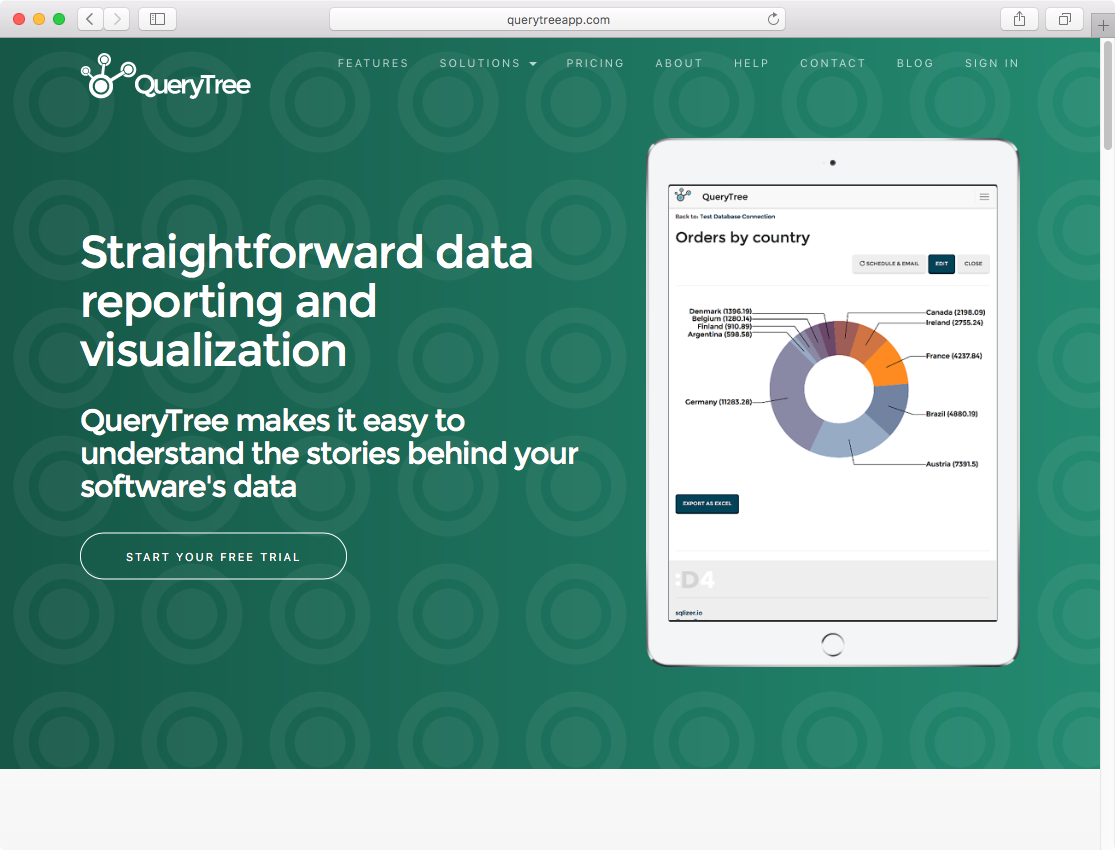How we build, deploy & host the QueryTree site without servers
Jul 14, 2016
We recently re-launched our data reporting and visualization tool QueryTree with several new features and a shiny new website.
We’ve been hosting on a self-hosted Wordpress installation for some time, which makes it extremely easy to write and publish a post, but that ease comes with a lot of overhead.
The drawbacks include; a slower site as pages are generated by the application and database, security issues as the software needs to be patched and maintained, and scalability worries: a large amount of traffic might crash the Wordpress box.
The new site solves those problems, and with automated deployment is nearly as easy to edit as a Wordpress site.
The site is built, deployed and hosted - all without servers.
Of course, there are servers somewhere along the way - but thanks to virtualization, we needn’t be too concerned with provisioning or managing them.
##Write
We write our posts in markdown, along with some ‘front matter’ that describes certain metadata (date & time, templates, etc).
In this way it’s pretty hard to make mistakes that break the site layout or styles, they are simply text files that are processed for formatting and rendered into templates.
##Build & Deploy
We host the repo on Bitbucket and use the new Pipelines feature to build the site with Jekyll, then use s3_website gem to deploy to Amazon S3.
An s3_website.yml file sits in the root, referencing environment variables for secrets:
And we use a sed command in the bitbucket-pipelines.yml configuration file to swap out the relevant bucket name for production and development environments:
A Gemfile in the root tells Bundler which gems to install:
When a new commit to the ‘master’ or ‘develop’ branches is made, Bitbucket Pipelines goes ahead; starting a Docker image, installing gems, building the site with Jekyll and deploying using s3_website - automatically.
We can use the git workflow here - an author can make changes to ‘develop’, test, and open a pull request. Once reviewed, the pull request can be merged into master and deployed.
##Host
Amazon S3 buckets can act as websites, so once deployed the S3 bucket serves the pages to visitors - but behaves like an object store to us, and a server to visitors.
The site can be edited by anyone on the team with a text editor, then committed and deployed in less than 60 seconds.
Faster, more scalable and more secure than a Wordpress installation - all without a single server configured.
